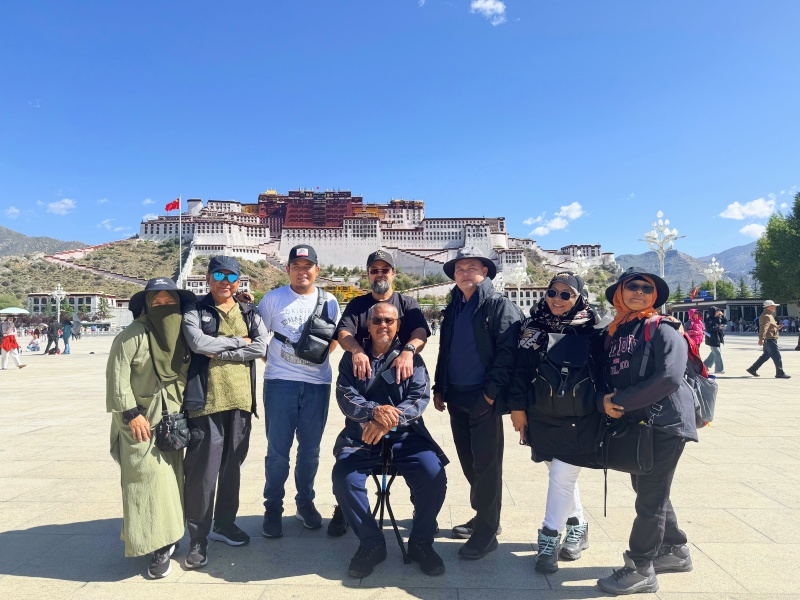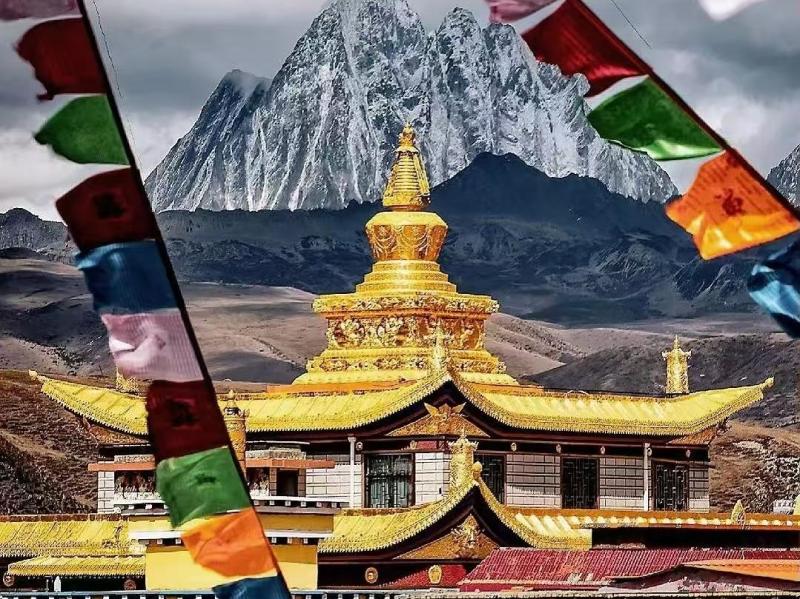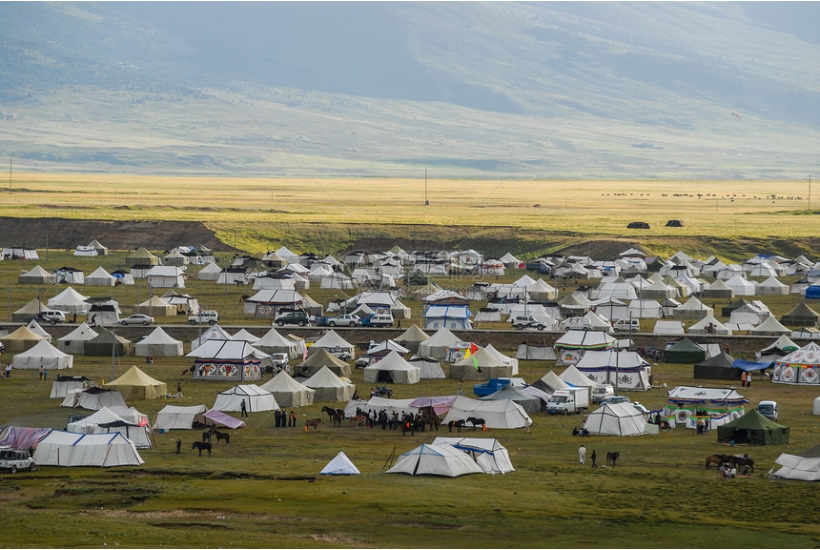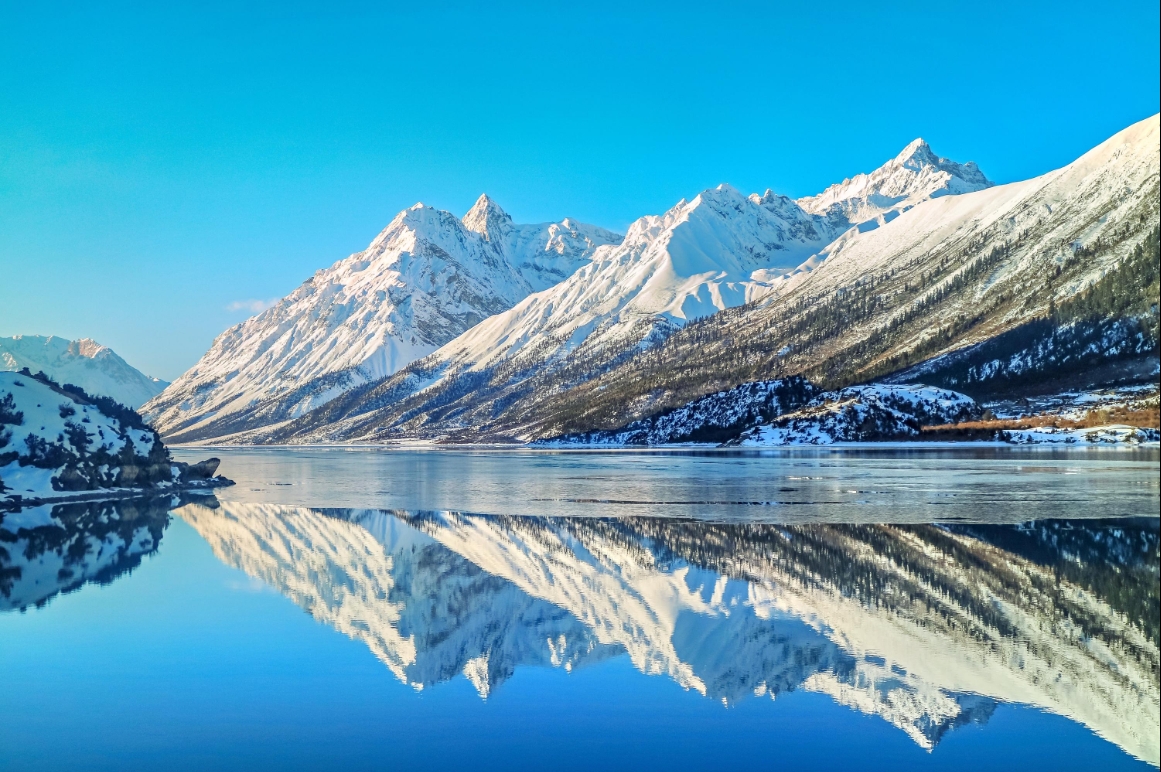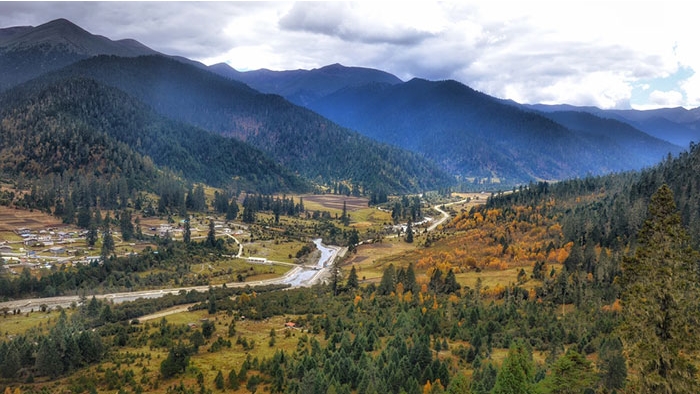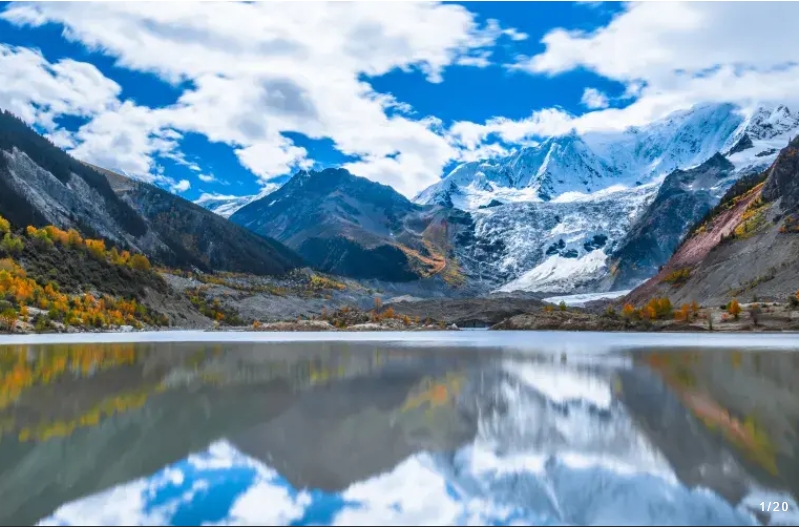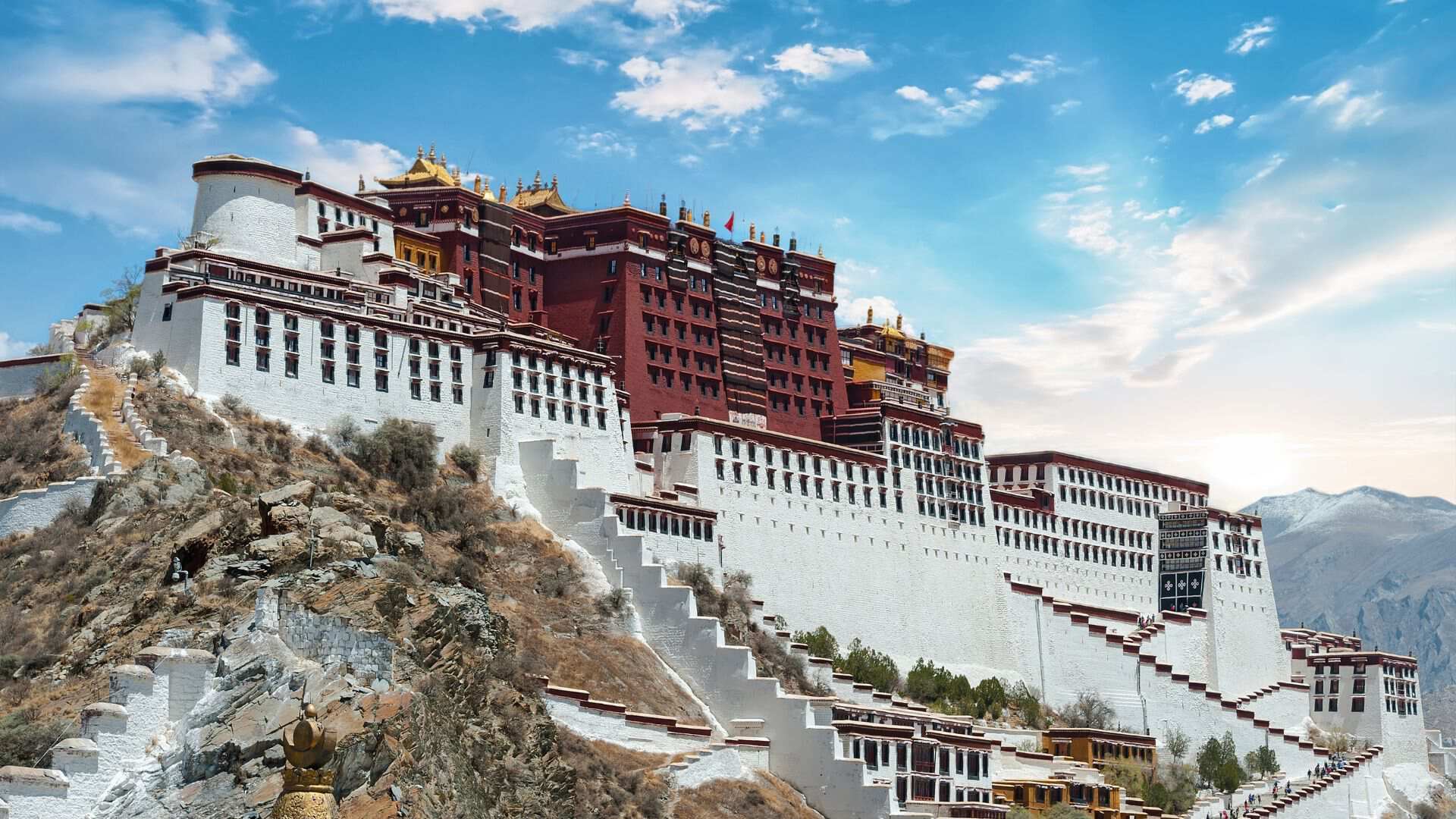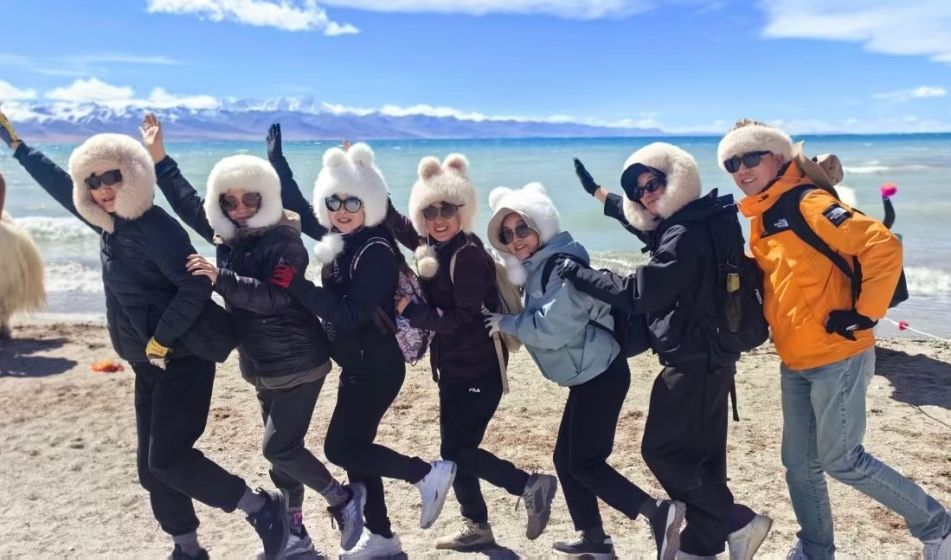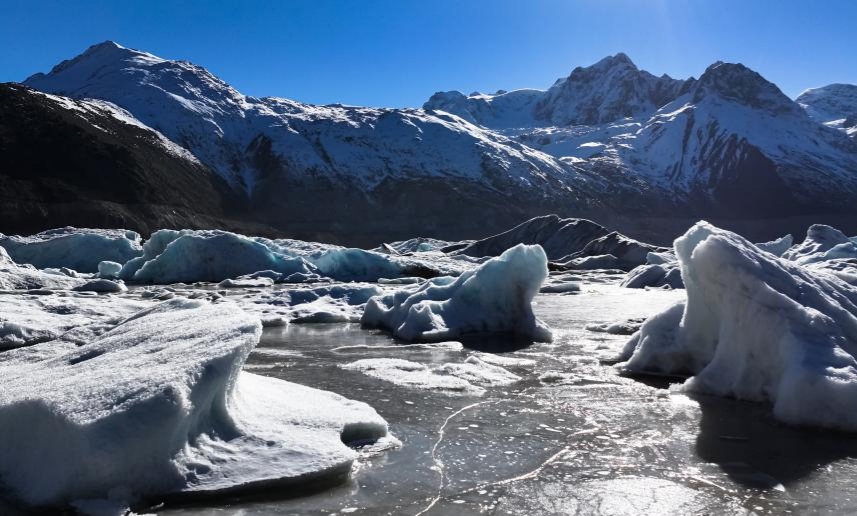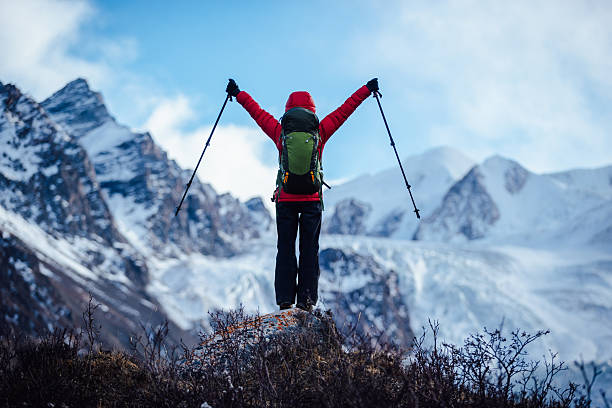
Details
Chengdu – Ya’an – Luding – Kangding – Xinduqiao
Depart from Chengdu, traveling along the Chengdu–Ya’an Expressway to reach Ya’an, known as the “Rainy City.” Follow the scenic Qingyi River to Mount Erlang, and pass through the Erlang Mountain Tunnel (4.1 km), the longest highway tunnel in China. Experience the dramatic change in climate as you emerge into the Dadu River Valley, the largest and deepest canyon in western Sichuan.
Continue to Luding County to see the historic Luding Chain Bridge, where the Red Army once fought bravely during the Long March. Arrive in Kangding, the hometown of the famous “Love Song of Kangding.”
Drive onward and cross Zheduo Mountain (altitude 4,298 meters), known as the first pass into Kham (eastern Tibet), and arrive at Xinduqiao—a paradise for photographers. Here, you can enjoy the picturesque morning light illuminating small bridges, flowing streams, Tibetan villages, and traditional Tibetan-style dwellings.
Meals: Customizable
Accommodation: Customizable
Xinduqiao – Tagong – Yajiang – Mangkang
Set out early from Xinduqiao and drive 35 km to the vast Tagong Grassland, where you will visit Tagong Monastery and enjoy distant views of the sacred Mount Yala (Yala Snow Mountain). Continue to ascend Gao’ersi Mountain (elevation 4,658 meters), then arrive at Litang, known as the world’s highest town, situated at over 4,000 meters above sea level. Despite its high elevation, the terrain around Litang is relatively flat, forming a wide expanse of grassland and highland pastures.
In the afternoon, cross Haizi Mountain Pass (altitude 4,700 meters), stopping to admire the Sister Lakes, and reach Batang County, known as the “Hometown of Tibetan Dance (Xianzi).” Leaving Batang, cross the Jinsha River, observing the dramatic natural scenery of steep mountains and roaring rapids in the Jinsha River Gorge.
After crossing the bridge, you officially enter the Tibet Autonomous Region. The route now traverses the area where three major rivers run parallel. In the afternoon, arrive at Mangkang, located at the junction of the Yunnan–Tibet and Sichuan–Tibet Highways. Mangkang is the first Tibetan county town after entering Tibet, under the jurisdiction of Chamdo Prefecture.
Meals: Customizable
Accommodation: Customizable
Mangkang – Zuogong – Bangda – Baxoi – Ranwu
After lunch, cross a series of high mountain passes including Jueba Mountain, Rawu Mountain, and Dongda Mountain (elevation 5,008 meters), eventually arriving in Zuogong (elevation around 4,000 meters). This day’s journey involves significant altitude changes, and altitude sickness may occur.
Continue to Bangda, the junction of the Northern and Southern Sichuan–Tibet Highways. Ascend Yela Mountain (elevation 4,839 meters), where the vehicle winds along a series of zigzag switchbacks known as the “99 Bends”—the most winding section of the entire Sichuan–Tibet route.
Cross the Nujiang Grand Canyon, considered the most treacherous natural barrier of the Hengduan Mountains. Along the way, admire unique weathered rock formations and rugged mountain landscapes. While passing Dola Holy Mountain, you’ll see sky burial platforms, Tibetan stone carvings, and Buddhist mantras etched into the cliffs. On the descent, the scenery transforms into a blend of pristine forests and rural pastures, creating a stunning contrast.
This day’s journey is a true challenge for all travelers. On the Dongda Mountain Pass and the Bangda Grasslands, temperatures may drop below 0°C, while along the Lancang River and Nujiang River, it can reach up to 20°C. In just one day, you will experience an elevation difference of nearly 2,500 meters.
By evening, you will arrive at the beautiful Ranwu Lake.
Meals: Customizable
Accommodation: Customizable
Ranwu Lake – Midui Glacier – Bomi
Ranwu Lake is a stunning high-altitude glacial lake, often described as a fusion of the snowy peaks and glaciers of the Swiss Alps with the crystal-clear waters of Jiuzhaigou. From the lakeshore, you can admire the distant snow-capped mountains and glaciers, while flocks of waterfowl drift peacefully across the mirror-like surface, creating a truly otherworldly scene.
Departing from Ranwu Lake, the journey heads toward Bomi, along what is widely regarded as the most scenic section of the Sichuan–Tibet Highway. The route winds through lush forests, past deep blue lakes, where the trees reflect clearly in the transparent water. The sound of flowing streams fills the air, eagles soar overhead, and the landscape of snow peaks, lakes, farmlands, and Tibetan villages unfolds like a series of breathtaking postcards.
Along the way, stop to see the “Deaf-Mute Fountain”, a unique spring with fascinating acoustic effects. After driving about 20 km, arrive at the Midui Glacier, one of the most accessible and beautiful glaciers in Tibet.
Nestled in the forested valley is Bomi County, known for its fresh air, alpine charm, and tranquil surroundings.
Road conditions: The road surface is good, but the upper Ranwu section is narrow, so you need to choose a section if you miss the wrong car; the road from Xia Ranwu to Midui is gravel. The Bomi section is asphalt. Bomi is 2,680 meters above sea level.
Bomi – Tongmai – Lulang Forest – Nyingchi
Depart in the morning and follow the Parlung Tsangpo River. After approximately 30 km, arrive at the well-known Guxiang Debris Flow Zone, a geologically active area. Continue through the infamous Tongmai natural barrier, once one of the most dangerous sections of the Sichuan–Tibet Highway.
Stop for lunch in Lulang Town, where you can enjoy the local specialty: Lulang Stone Pot Chicken. Afterward, cross the Sejila Mountain Pass, en route to Linzhi (Nyingchi). If the weather is clear, you’ll have a chance to view the majestic Mount Namcha Barwa (7,782 meters), ranked the 15th highest peak in the world and often called “the most beautiful mountain in China.”
Along the way, take in sweeping views of the Lulang Forest Sea, and descend the winding, misty roads of Sejila Mountain to reach the lower valley of the Nyang River and Nyingchi County. Continue 19 km to arrive at Bayi Town, the administrative center of the Nyingchi region, at an elevation of 2,400 meters. Known as the “Jiangnan (southern Yangtze region) of Tibet”, Bayi is home to the Monba and Lhoba ethnic groups, whose customs are similar to those of Tibetans, yet many still preserve their traditional village lifestyles.
The Nyingchi area is famous for its lush mountains, clear rivers, and stunning natural scenery. If time permits, you may visit the nearby King Cypress Scenic Area, home to the world’s tallest and oldest cypress tree.
Meals: Customizable
Accommodation: Customizable (Overnight in Bayi Town, elevation 2,400 m)
Nyingchi – Gongbo’gyamda – Maizhokunggar – Lhasa
Depart early in the morning, enjoying the picturesque scenery along the Nyang River as you drive westward. In the afternoon, cross the Mila Mountain Pass (elevation 5,010 meters), then pass through Maizhokunggar, the hometown of Tibetan King Songtsen Gampo. Continue along the Lhasa River Valley, and after passing Dagzê County, you’ll catch your first distant glimpse of the majestic Potala Palace, perched atop Red Hill. Arrive in Lhasa, the sacred city long dreamed of by travelers and pilgrims alike.
Road Conditions:
The entire route from Nyingchi to Lhasa is paved asphalt road. Note that from Nyingchi onward, you will enter Tibet’s speed-controlled road zones and may need to register checkpoints.
Meals: Customizable
Accommodation: Customizable(Overnight in Lhasa)
Lhasa Day Tour
Potala Palace:
Located at an elevation of over 3,700 meters, the Potala Palace is built atop Red Hill. The name “Potala” is the transliteration of “Putuoluo,” meaning the residence of the Bodhisattva. It served as the political and religious center of old Tibet, and is divided into two main sections: the Red Palace, which houses stupas and numerous chapels, and the White Palace, which was the former seat of the local Tibetan government. (You can photograph a full panoramic view of the palace from the square in front.)
Jokhang Temple:
Also known as “Tsuklakhang” (meaning “Main Scripture Hall” in Tibetan), this temple has a history of over 1,350 years and is the oldest and most sacred temple in Lhasa. It remains a spiritual center for Tibetan Buddhism. Inside, it houses a life-sized gilded statue of the 12-year-old Shakyamuni Buddha, along with statues of Songtsen Gampo, Princess Wencheng, and Princess Bhrikuti.
Barkhor Street:
A cultural and spiritual hub in Lhasa and the entire Tibetan region, Barkhor Street is filled with pilgrims from across Tibet, bustling vendors, and historic buildings. It is not only a circumambulation path (kora) around the Jokhang Temple but also Lhasa’s largest traditional market, with shops lining the street selling goods rich in Tibetan, Nepalese, and Indian influences. Hidden among its structures are many ancient sites that tell the story of Lhasa’s rich past.
Meals: Customizable
Accommodation: Customizable
Fee Description
Inclusions:
To be discussed (customizable upon request)



